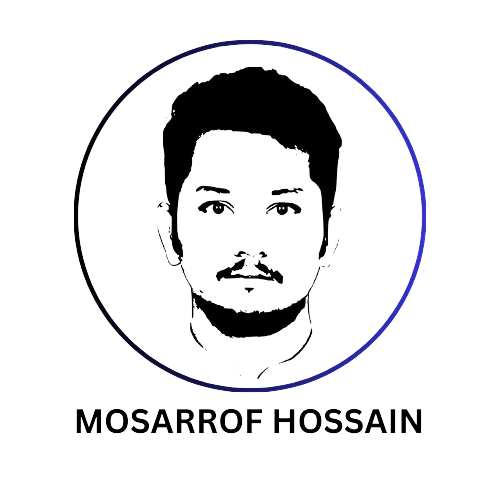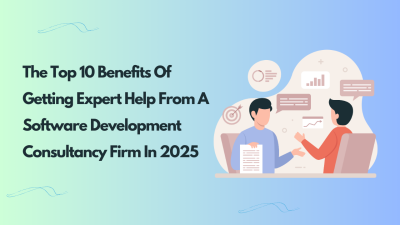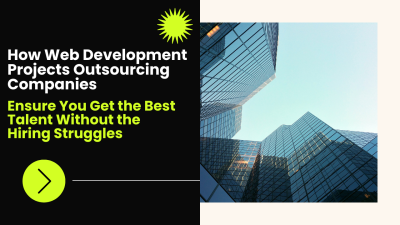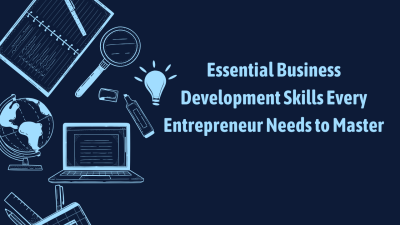Over the years, I’ve had the privilege of developing successful SaaS programs for many clients, helping them build and execute growth strategies that not only boost their revenue but also create sustainable growth. At Qtec Solution Limited, we’ve developed customized SaaS growth strategies for our clients that have helped them scale their businesses and stay ahead of the competition. As we move into 2025, the SaaS landscape is evolving rapidly, and if your business doesn’t evolve along with it, you risk falling behind.
From my experience, I’ve come to realize that there are several key areas to focus on in your SaaS growth strategy to stand out in a crowded market. Whether you’re in the early stages of your SaaS business or are looking to scale, here’s how you can develop a SaaS growth strategy that will help you succeed.
Table of Contents
Focus on Customer Retention – The Secret to Long-Term SaaS Growth
SaaS growth strategy cannot thrive without a strong focus on customer retention. Retaining customers is not only more cost-effective than acquiring new ones, but it’s also essential for sustainable growth. Here’s how I guide my clients to develop a retention-focused SaaS growth strategy:
- Improve Onboarding Experience: A seamless and engaging onboarding process is crucial to ensuring your customers stick around. I always recommend my clients invest in a structured onboarding flow that ensures customers understand how to use the product and get value from it quickly.
- Proactive Customer Support: I can’t emphasize enough how important proactive support is for customer retention. When customers feel supported, they’re more likely to stay loyal to the product. This means providing resources, answering questions before they arise, and ensuring customers feel valued.
- Personalized Engagement: I always tell my clients to leverage data to personalize their communication with users. Sending tailored messages, helpful tips, and product updates based on user behavior is a great way to show customers you’re invested in their success.
- Monitor Customer Feedback: Regular feedback loops are essential. I help my clients build systems that constantly track customer satisfaction and use those insights to enhance the product experience and drive retention.
- Reward Loyalty: Implementing loyalty programs or offering exclusive features to long-term users is a great way to foster deeper relationships and encourage customers to remain with your SaaS product for the long haul.
Leverage Data to Drive Personalization – Customizing Your SaaS Product to Users’ Needs
One of the most powerful tools in any SaaS growth strategy is data. By leveraging data, you can personalize the user experience, which significantly improves engagement, satisfaction, and retention. Here’s how I help clients create data-driven SaaS growth strategies:
- Behavioral Analytics: I always encourage my clients to gather data on how users interact with the product. This enables you to identify patterns, preferences, and pain points, allowing you to deliver a more customized experience that drives satisfaction.
- Custom Recommendations: With the right data, I guide my clients to offer personalized recommendations based on usage patterns. This could be suggesting additional features or services that the user is likely to benefit from, making the product more valuable to them.
- Segmentation for Targeted Campaigns: I recommend segmenting your customers based on their behavior, needs, and interactions with your SaaS product. This allows you to deliver tailored content and offers, ensuring you’re meeting the unique needs of each customer.
- Measure Success: I always advise tracking key performance indicators (KPIs) to understand which personalization strategies are working. This way, clients can continuously refine their SaaS growth strategy and ensure maximum impact.
- Predictive Analytics: Using predictive analytics to foresee potential customer behaviors and needs can help companies stay ahead of the curve. I work with my clients to implement systems that predict churn and suggest retention efforts before customers leave.
Invest in Scalable Marketing Channels – Diversify to Expand Your SaaS Reach
Marketing is a crucial part of any SaaS growth strategy. However, the key to successful SaaS marketing lies in finding scalable channels that can grow with your business. Here’s how I help my clients expand their reach and drive acquisition:
- Content Marketing: I advise my clients to invest in creating high-quality, SEO-optimized content that educates and informs their target audience. This long-term strategy helps build brand authority and attracts organic leads.
- Referral Programs: Word-of-mouth is one of the most powerful tools for growing a SaaS business. I work with clients to develop referral programs that incentivize current users to refer others, accelerating growth through trusted recommendations.
- Paid Advertising: Paid ads can be a very effective way to quickly scale, but they need to be used strategically. I help my clients identify the right platforms for their target market—Google Ads, LinkedIn, Facebook, etc.—and craft compelling campaigns that drive quality leads.
- Email Marketing: Email marketing is a highly effective way to nurture leads and retain customers. I help clients develop targeted email campaigns to engage users at different stages of the funnel, from onboarding to retention.
- Social Media: Building a strong social media presence can help SaaS companies increase brand awareness and drive inbound leads. I recommend leveraging social platforms not just for marketing, but for engaging directly with customers, creating content, and building a community.
Focus on Pricing Models that Encourage Expansion – Pricing Strategy for Long-Term SaaS Growth
Pricing is one of the most significant decisions in any SaaS growth strategy. A flexible, scalable pricing model can fuel long-term growth and expansion. Here’s how I guide my clients in choosing the right pricing strategy:
- Freemium Models: Offering a free version of your SaaS product can help attract a large number of users. I help my clients design freemium models that balance providing value upfront with encouraging users to convert to paid plans.
- Tiered Pricing: I advise clients to implement tiered pricing models based on usage or features. This allows businesses to cater to a wide range of customer needs while also increasing revenue from high-value customers.
- Usage-Based Pricing: For SaaS products with variable usage levels, a usage-based pricing model can be a great way to allow users to pay based on how much they use. This can be a powerful tactic for businesses looking to increase their SaaS growth strategy without overcomplicating pricing.
- Trial Periods: I recommend offering free trials with certain restrictions or time limits. This gives users a risk-free opportunity to experience the value of the product, often leading to higher conversion rates when the trial ends.
- Discounts and Promotions: Limited-time discounts or offers for longer commitments can encourage users to upgrade to higher plans or commit to long-term contracts, which can boost both revenue and retention.
Invest in Your SaaS Team – A Strong Team Drives SaaS Growth
Behind every successful SaaS growth strategy is a strong, cohesive team. Over the years, I’ve learned that investing in the right people and building the right culture is essential for scaling effectively. Here’s how I guide my clients in building teams that support growth:
- Hiring for the Right Skills: I always stress to my clients the importance of hiring individuals who not only have the right skills but are also aligned with the company’s values and long-term vision. A great team can drive exceptional results.
- Collaboration Across Teams: I encourage cross-functional collaboration between sales, marketing, and customer success teams. When these departments are in sync, they can create a seamless experience for customers that drives growth and retention.
- Training and Development: I guide my clients in developing training programs to keep their team members up to date with the latest tools, technologies, and industry trends. Investing in professional development ensures the team remains agile and efficient.
- Performance Metrics and Accountability: I help clients establish clear performance metrics to track the progress of their team. Regular check-ins, feedback, and accountability help maintain a high-performing team that consistently supports the SaaS growth strategy.
Stay Agile and Adapt to Market Changes – Keep Evolving Your SaaS Offering
The SaaS market is always changing, and businesses that fail to adapt risk losing their edge. I encourage my clients to stay flexible and evolve with the market. Here’s how I guide them to build an agile SaaS growth strategy:
- Monitor Competitor Movements: I recommend keeping a close eye on competitors and industry shifts. This helps businesses stay ahead of the curve and allows them to pivot or tweak their offerings based on market changes.
- Innovate Regularly: SaaS products need to continually evolve. I work with my clients to implement regular updates, introduce new features, and refine the product offering to keep users engaged and maintain a competitive edge.
- Adapt to Customer Needs: Customer needs evolve, and businesses need to be responsive to those changes. I help clients build systems to track user feedback and use it to shape future product updates and improvements.
- Test and Iterate: I always recommend a culture of experimentation. Whether it’s testing new features or adjusting marketing strategies, constant iteration is key to keeping your SaaS business fresh and competitive.
Optimize for Mobile – Expand Your Reach with Mobile-Friendly SaaS
With more users accessing SaaS products via mobile devices than ever before, optimizing for mobile is a critical part of any SaaS growth strategy. Here’s how I help my clients make the most of this opportunity:
- Mobile-First Design: I recommend designing your SaaS product with mobile users in mind from the beginning. A responsive, easy-to-navigate mobile app ensures users can access your product anytime, anywhere, improving engagement and satisfaction.
- Mobile App Development: If your SaaS product has the potential for mobile use, I encourage developing a dedicated mobile app. A well-designed app can increase user convenience and open new revenue streams, driving growth.
- Mobile User Analytics: I also recommend tracking how users interact with your product on mobile devices to optimize the mobile experience and improve customer retention for mobile users.
Foster Community Engagement – Building a Loyal SaaS User Community
Creating a sense of community around your SaaS product can significantly boost customer loyalty and engagement. Here’s how I help my clients develop a strong community around their brand:
- Online Communities: I encourage building dedicated online communities through forums, social media groups, or a product-specific Slack channel. Engaging with customers regularly fosters a sense of connection and loyalty.
- User-Generated Content: Encourage users to share their experiences, write reviews, or create tutorials. User-generated content strengthens your community and builds trust, which is vital for a strong SaaS growth strategy.
- Host Webinars and Events: Hosting educational webinars or user events helps keep your community engaged and informed. This also serves as a great way to introduce new features and highlight how users can get the most value out of the product.
Focus on International Expansion – Reach a Global Audience with Your SaaS Product
Expanding your SaaS growth strategy to international markets can open new avenues for growth. Here’s how I help my clients scale globally:
- Localization and Translation: For global expansion, I recommend localizing the product and translating it into key languages. This ensures that your SaaS product is accessible to non-English speaking users, improving adoption rates in new markets.
- Global Payment Systems: I advise integrating multiple payment gateways that allow users to pay in local currencies, which enhances user convenience and builds trust in foreign markets.
- International Support: Providing customer support in multiple languages is critical. I help clients set up localized support teams or resources to ensure global users have a seamless experience.
Align Sales and Marketing Teams – Creating Unified Efforts for SaaS Growth
One of the most effective ways to ensure that your SaaS growth strategy is successful is by aligning your sales and marketing teams. Here’s how I help my clients align these teams for maximum impact:
- Shared Goals and Metrics: I recommend that sales and marketing teams share common objectives and KPIs. This ensures everyone is working toward the same growth targets and enhances collaboration.
- Lead Scoring: I help clients develop lead scoring systems to ensure marketing generates high-quality leads and that sales teams can prioritize them effectively.
- Regular Communication: I encourage regular meetings between sales and marketing teams to discuss progress, share insights, and fine-tune strategies. Cross-department communication ensures that both teams are working in harmony, supporting the SaaS growth strategy.
Implement Advanced Automation – Scale Efficiently with Automation Tools
As your SaaS business grows, automation can become a key enabler of SaaS growth strategy by streamlining operations and improving efficiency. Here’s how I help my clients leverage automation:
- Automate Marketing Campaigns: I assist clients in setting up automated email marketing flows, social media posts, and ad campaigns. This helps reach a larger audience and reduces the manual effort required for marketing.
- Customer Success Automation: I recommend using tools that automate customer onboarding, follow-ups, and feedback collection. This enhances the customer experience and allows you to provide support at scale.
- Sales Process Automation: From lead generation to follow-ups and reporting, automating aspects of the sales pipeline ensures that sales teams spend more time closing deals and less time on administrative tasks.
Strengthen Security and Compliance – Build Trust with Your Users
As cybersecurity and data privacy concerns continue to rise, ensuring that your SaaS product is secure and compliant is crucial to maintaining trust and ensuring long-term growth. Here’s how I help my clients strengthen security as part of their SaaS growth strategy:
- Implement Robust Security Features: I advise implementing advanced security protocols such as end-to-end encryption, multi-factor authentication, and secure data storage. This helps ensure that your customers’ data is protected, which in turn builds trust.
- Ensure Compliance with Regulations: With GDPR, CCPA, and other regulations becoming stricter, I guide clients in ensuring their SaaS product is compliant with all relevant data privacy laws. This not only reduces the risk of fines but also enhances your reputation with customers who value privacy.
- Regular Security Audits: Performing regular security audits and vulnerability testing is crucial. I help clients set up systems for regular audits to identify potential weaknesses and proactively address them.
Offer Seamless Integrations – Make Your SaaS Product Irreplaceable
Integrations are one of the best ways to enhance the value of your SaaS product. By ensuring your product integrates well with other popular tools and platforms, you can significantly increase adoption and satisfaction. Here’s how I help clients build integrations as part of their SaaS growth strategy:
- API Integrations: I recommend offering an open API or pre-built integrations with popular tools (e.g., CRM systems, email marketing platforms, project management tools). This makes it easier for users to connect your product with their existing workflows, improving user satisfaction and retention.
- Partnerships for Integration: I also guide clients in forming strategic partnerships with other software companies to create joint integrations that add value for users. This expands the potential user base and makes your SaaS product more indispensable in their daily operations.
Conclusion
At Qtec Solution Limited, we’ve helped many SaaS businesses achieve substantial growth through strategic planning, data-driven decisions, and an unwavering focus on customer success. The SaaS growth strategy that works today won’t be the same tomorrow, so it’s crucial to stay ahead of industry trends and continuously innovate. By following these strategies, you can build a solid foundation for sustainable growth and ensure your SaaS business thrives in 2025 and beyond.
Frequently Asked Questions
How can I improve my SaaS growth strategy in 2025?
Focus on customer retention, diversify marketing efforts, and implement data-driven personalization. Ensure you have a flexible pricing model and invest in your team to continuously support growth.
What’s the best way to scale a SaaS product?
To scale effectively, focus on creating a strong product-market fit, use automation, and invest in customer success. Regularly iterate on your offerings based on customer feedback and market shifts.
How important is customer retention for SaaS growth?
Customer retention is critical for SaaS growth. It’s often more cost-effective than acquiring new customers and ensures long-term revenue stability. Prioritize providing value and keeping customers engaged.




